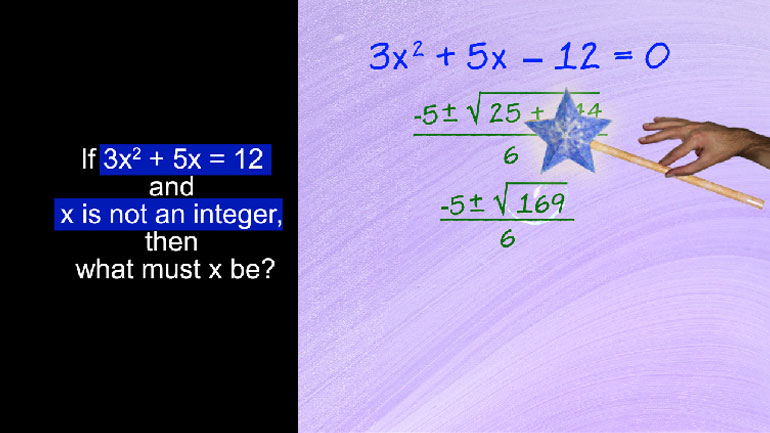ShmoopTube
Where Monty Python meets your 10th grade teacher.
Search Thousands of Shmoop Videos
SAT Math 6.3 Geometry and Measurement 241 Views
Share It!
Description:
SAT Math 6.3 Geometry and Measurement
Transcript
- 00:02
Here’s your shmoop du jour, brought to you by the number 10.
- 00:06
Which is the biggest number we can count up to without removing our socks.
- 00:10
If an equilateral triangle has side length equal to 10, what is the length of its altitude?
- 00:16
Here are the potential answers...
- 00:22
Alright, down to business.
Full Transcript
- 00:23
The altitude of a triangle always runs perpendicular to its base…
- 00:30
…and we can indeed see that a couple of right angles are formed at the bottom.
- 00:35
Which is dandy news.
- 00:37
Now we have ourselves a pair of right triangles.
- 00:39
We can deduce that the base of each right triangle is 5…
- 00:43
…since the length of each full side of the equilateral triangle is 10…
- 00:47
…and our altitude line bisects it.
- 00:49
Yup…slices it right down the middle…like that poor worm you disposed of in biology.
- 00:53
So…now that we have the length of two sides of our right triangle…
- 00:57
…5 for the base and 10 for the hypotenuse…
- 00:59
…we can apply our buddy Pythagoras and his theorem.
- 01:02
5 squared plus our altitude squared equals 10 squared.
- 01:06
Or… 25 plus our altitude squared equals 100.
- 01:10
So the altitude is going to be the square root of the difference,100 - 25, or 75.
- 01:16
Which simplifies to the square root of 25 times 3…
- 01:19
…or 5 square root of 3 and the answer is C.
- 01:22
Beautiful.
Up Next
SAT Math 2.1 Geometry and Measurement. What is the measure of angle z in terms of x and y?
Related Videos
In 2014, the unemployment rate of one county in California was 7%. In another county, the unemployment rate was 11%. Which of the following express...
Angela is making cookies for a bake sale. She expects each batch of her cookies to sell for $40. It costs her $10 to make one batch of cookies, and...




